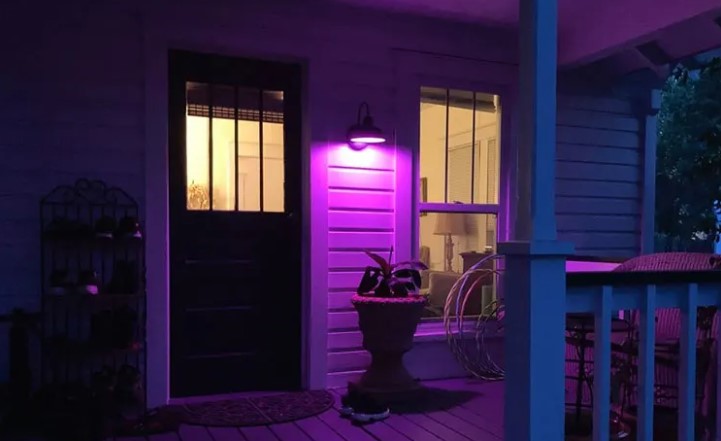A purple porch light might seem like just another decorative lighting choice, but in reality, it carries a much deeper and more powerful meaning. It’s not just about aesthetics—it’s a heartfelt symbol of support for survivors of domestic violence. Domestic violence doesn’t discriminate; it affects people of all ages, races, genders, and socioeconomic backgrounds.

It’s not always visible or limited to physical harm—it often includes emotional manipulation, psychological intimidation, financial control, and even verbal abuse. Tragically, many victims suffer in silence, often out of fear, shame, or simply because they don’t know where to turn. That’s where the purple light comes in. When someone chooses to display a purple light on their porch, they’re sending a clear and compassionate message: you are not alone, and this is a safe space. The color purple is not a random choice. For years, it has been associated with strength, courage, survival, and honor—qualities that reflect the resilience of individuals who’ve endured the pain of abuse and found the bravery to either escape it or begin the journey toward healing.
The purple light stands as a silent but powerful tribute to those survivors, honoring their experiences and encouraging others to offer empathy and understanding instead of judgment. What makes the purple porch light such an important gesture is how it opens the door to conversation. When neighbors or passersby see it, they may be inspired to ask questions or look up its meaning, which helps spread awareness and education about domestic violence. This visibility helps make the invisible visible. After all, abuse often hides behind closed doors and smiling faces, making it harder for others to recognize when someone needs help. By shining this light, individuals contribute to breaking the silence and making it easier for victims to feel seen and heard. Still, while the purple light is a meaningful symbol, it’s only one piece of a much bigger picture.
Truly supporting survivors requires more than just a lightbulb. It means actively listening to those who come forward with their stories, offering help without criticism or skepticism, and sharing resources like the phone number for a local shelter or a national domestic violence hotline. Being supportive also means advocating for stronger protections, policies, and programs that aid survivors in rebuilding their lives. Prevention is equally vital. Addressing domestic violence at its root involves changing cultural attitudes that enable abusive behavior to go unchecked. It means teaching young people about boundaries, respect, consent, and healthy relationship dynamics from an early age.
It means creating environments—in schools, homes, workplaces, and communities—where kindness, respect, and accountability are the norms, not the exceptions. It also involves ensuring that those who commit abuse are held responsible for their actions in ways that protect victims and deter future harm. In this broader effort, the purple light serves as a rallying point—a reminder that change starts at the community level and that small gestures can lead to bigger conversations and actions. When someone chooses to illuminate their home with purple, they’re not just decorating—they’re declaring that they care, that they’re aware, and that they stand in solidarity with survivors everywhere. It’s a simple act, but it carries enormous emotional weight and social significance. So the next time you see a porch glowing purple, remember that it represents more than support—it’s a beacon of hope, strength, and healing. It tells survivors that they are believed, that they are valued, and that they are not alone in their fight. And if enough homes light up with this symbol of care, we can create neighborhoods, communities, and a society where abuse has no safe haven and where healing can begin. By choosing purple, we choose empathy. By shining a light, we can help change a life.





